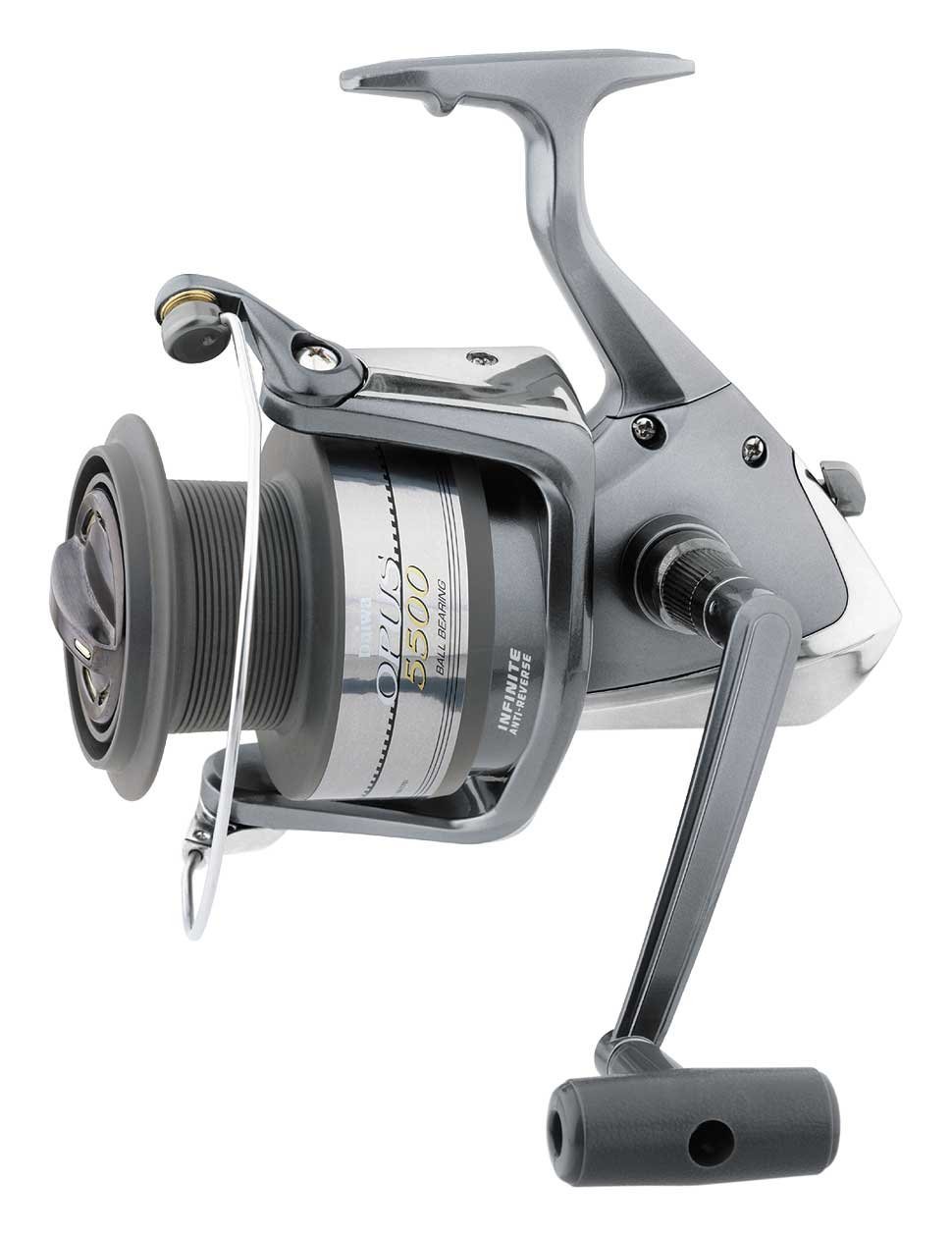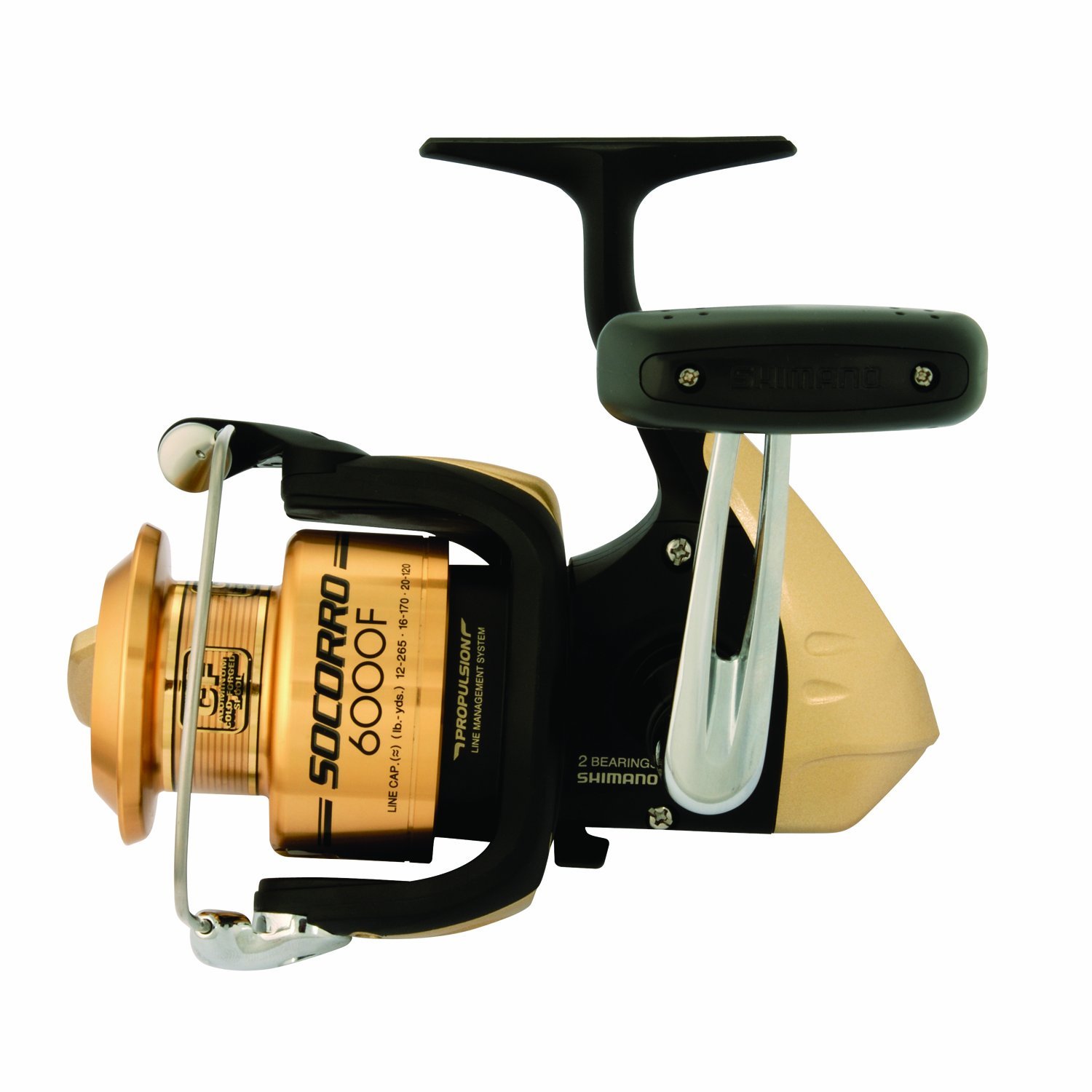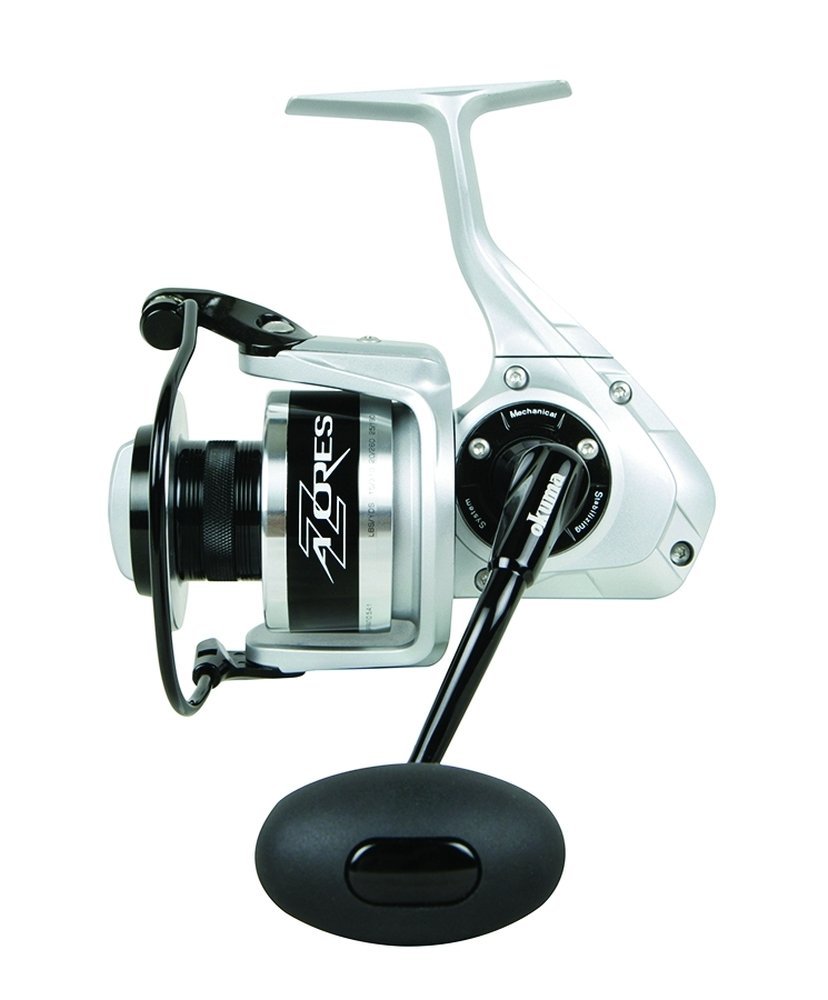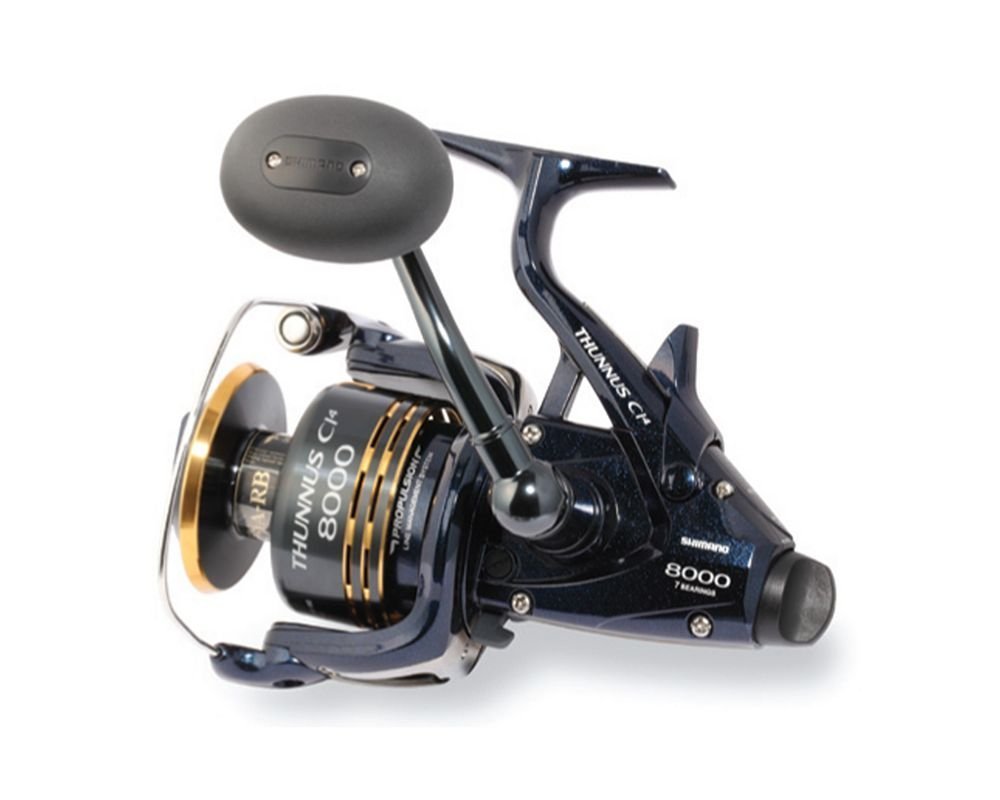Best Saltwater Spinning Reels Review

If you have been looking around for a new spinning reel, you may have noticed that they can be classified according to freshwater or saltwater fishing. BestSaltwater spinning reels can be significantly more expensive, yet they often look identical, or at least very similar, to freshwater spinning reels. Furthermore, maybe you have already used your standard freshwater spinning reel in the ocean and noticed it performed fine. So what gives?
Saltwater Spinning Reels vs Freshwater Spinning Reels
The difference between saltwater spinning reels and freshwater spinning reels usually isn’t in the performance. Instead, saltwater spinning reels are simply designed to resist the corrosion from the salt more effectively. No matter what type of reel you use, you should always rinse the reel in cold water after use in saltwater, but saltwater reels will still last way longer. If you’re someone who enjoys using an ultralight spinning reel, you can get these rated for both saltwater and fresh water, but at this point, it’s still a little more common to see them in the fresh water version.
- Basic
- Mid-Range
- High-End
- Pro
Daiwa Opus Saltwater Spinning Reel

Pros
- Very low cost!
- Infinite anti-reverse system
- Smooth drag
- Line twist reduction system
Cons
- Bail is a little tight upon initial loose
- Some of the housing is plastic, seems a bit cheap.
General Consensus
If you’re in a jam and need a new reel for the lowest price, then this is one of your better bets. The Daiwa Opus saltwater spinning reel challenges the notion of you get what you pay for’, as it’s actually pretty decent quality and performance for the cost.
There isn’t anything overly special about this reel, but it has all the features you would expect in a spinning reel, including a nice anti-reverse function, smooth drag system, and a decent gear ratio (4.6:1). The line capacity will depend on the size, but these are fully listed in the specs for each particular size reel.
Of course, you can’t expect this reel to be absolutely perfect, as it is on the far end of the cheaper range for reels. However, the main issues with this reel are rather trivial. For example, the bail can be a little tight when you first use it, making it a bit inconvenient to flip over, but it is known to loosen up fairly quickly (or you can loosen it yourself, but we recommend trying to work it in a bit first). Some of the housing is plastic and seems a little cheap, but isn’t a deal breaker. Lastly, the ball bearing count is low (1 ball bearing, one roller bearing), so if they get damaged you may see a fairly quick drop in performance.
Overall, this is a great value saltwater spinning reel that we highly recommend for those on a strict budget. You may want to pay extra close attention to rinsing and other maintenance if you want it to last as long as some of the more expensive ones, but overall, great bang for your buck!
Shimano Socorro 6000FB Saltwater Spinning Reel

Pros
- Decent price
- Propulsion spool lip and line management system
- lightweight graphite frame, sideplate, and rotor.
- Waterproof drag
- Dyna-balance
Cons
- Mainshaft/drag may feel a little weak to some
- Difficult to find on sale
General Consensus
This is a good value saltwater spinning reel that employs slightly better functionality than a base-level reel. The drag system is entirely waterproof, and added features like Dyna-balance and Super Stopper II are nice additions. The ball bearings are made of stainless steel and are also shielded for added protection from salt corrosion.
The gear ratio is a little bit higher in this model (4.9:1) compared to the base-level Daiwa reel that we reviewed. Line capacity specs are 12/265, 16/170, and 20/120. There’s also a propulsion spool tip and line management system which helps promote smooth operation.
The only noticeable downsides are the drag being a little weak compared to some other reels, which can be a bit more of an issue in the ocean. Also, we have found it difficult to find this reel on sale, but that’s based simply on our limited experience of shopping around for this particular item.
Overall, the Shimano Socorro 6000FB saltwater spinning reel is a great option for those who have a tiny bit of wiggle room in their budget, but still need something that provides great value. It’s on the lower end of the price range, especially considering the cost of some of the other Shimano saltwater spinning reels, which makes it a nice option if you’re a fan of the brand. We would definitely recommend this reel to those who want to keep it cheap, but don’t want the absolute cheapest reel available.
Okuma Azores Saltwater Spinning Reel

Pros
- Very reliable brand
- 6+1 corrosion-resistant stainless steel bearings
- Precision dual force drag system (multi-disc, carbonite)
- Quick anti-reverse roller bearing plus ratchet system
Cons
- Starting to get into a more expensive price range
- Retrieval feels a little stiff at first, but breaks in fairly quickly.
General Consensus
The Okuma Azores line of saltwater spinning reels is excellent, and even though it’s a little more pricey than a lot of other reels, it still offers great value. In this reel, you will find a good balance between performance and durability, as they use high quality materials and slightly more advanced features.
One thing this reel is particularly well-known for is the drag system, which is a precision dual force drag system (DFD). Many anglers notice the high performance of the drag system when they have a larger fish on the line, such as striped bass in the 20+ pound range.
The bearing count, high quality materials, and extremely sturdy frame all help promote a nice smooth retrieval. It may feel a little stiff at first, but after a few casts, and especially a few catches, it will break in very nicely and become very comfortable.
Overall, the Okuma Azores saltwater spinning reel offers yet another price point for anglers to consider; but unlike some other reels, there are no disappointing surprises with the Okuma Azores, just solid performance and durability. It’s the type of reel that really makes it difficult to stick to a lower budget, particularly since the price is justified, but this line of reels should be around for a long time, so if you can’t get it now just keep it in mind for future reference.
Shimano Thannus CI4 Saltwater Spinning Reel

Pros
- Top-of-the-line product
- 6+1 bearing count (ARB)
- Front and rear baitrunner drag
- Dyna-balance
- Propulsion line management system
- 30-37 inches retrieval per crank
- 12-27oz depending on exact model
- Unique combination of very lightweight construction and extreme power
Cons
- Expensive!
- Baitrunner drag may not be necessary for all anglers
General Consensus
The Shimano Thannus CI4 saltwater spinning reel is a beast! With extensive careful design/manufacturing, this reel combines a lightweight design, incredible performance, and top-notch durability for saltwater environments.
If we start with the materials used during construction, that alone is enough to make this a good reel. The stainless steel bearings are specially treated to last up to 10x longer than standard stainless steel bearings. The “Hagene gear” used in this reel is excellent, as no cutting work is applied to the teeth of the drive gear. With cold-forged metal, you can have confidence in the power and resilience of this reel.
Other “performance enhancers” include the Fluidrive II system which helps maximize the efficiency of the retrieval, the Dyna-balance feature which helps eliminate wobble and vibrations during the retrieval, and the Super-Stopper II anti-reverse which eliminates back-play and allows for substantial and instant hook setting power.
Overall, the Shimano Thannus CI4 saltwater spinning reel is top-of-the-line. It will perform extremely well in many conditions while still standing up to the test of time. The main downside? It’s really expensive compared to most other reels on the market. While the price is justified, it’s not always necessary to drop that much on a reel. Therefore, we recommend the Shimano Thannus CI4 to avid anglers with lots of experience, or to those who have a lot of room to play with in their budget.
Difference Between Freshwater and Saltwater Spinning Reels
So why can best saltwater spinning reels last longer than freshwater spinning reels? Doesn’t saltwater degrade the reel? The reason for enhanced durability is usually due to one or two factors (depending on the reel).
First, some saltwater reels come with internal waterproof casings to resist corrosion of the gearing and drag systems. While this doesn’t necessarily improve performance, it certainly prevents the decline in performance.
Secondly, the metals used in the manufacturing process are specially designed to resist corrosion. Common metals include stainless steel or anodized aluminum. Similar to anodized pliers, an electro chemical process is applied to the aluminum which allows it to resist corrosion caused by the salt.
Maintaining a Saltwater Spinning Reel
Even though best saltwater spinning reels are designed to resist corrosion, like all other pieces of sports equipment, they will gradually wear down over time. How long the reel lasts will be determined by how well you take care of it. Here are some ways you can promote a lengthy life span of your saltwater spinning reel.
- Rinse the reel in cold fresh water after every use!! This is the very minimal amount of maintenance you should perform on your reel. It’s easy and effective. Remember, it’s not water that corrodes the reel, it’s the salt. If you want to go one step further to get the longest lifespan out of your reel as possible, disassemble the reel into parts before washing in fresh water. Some anglers recommend using a spray bottle to gently spray a mist of fresh water over all of the parts. The salt will accumulate in the drops and then you can gently dry off the parts with some paper towel. The reason some people recommend this is because a vigorous wash when the reel is intact may force some of the salt deeper into the internal components. That being said, a vigorous wash of an ictact reel is still way better than not cleaning it at all!If you’re short on time after you’re done fishing, try leaving the reel soaking in fresh water overnight, and then coming back to it the next morning for drying.
- Over time, you may notice the smoothness of your retrieval degrades the more you use it. It’s always a good idea to have some reel lubricant on hand somewhere in your tackle box or at home. You won’t go through it very carefully, but investing in a little bit can go a long way. If you plan on lubricating the reel yourself, try and keep it to the external mechanical components. Depending on the type of lubricant you use, if you apply it to the internal components, it could actually lead to some break down of the grease, accelerating the degradation process. Therefore, to be safe, just focus on the external components. If you do feel the need to lubricate the internal components of the reel, no problem, Flannelfishermen.com would just recommend that you double check at a tackle shop or with the reel manufacturer about which lubricant is ideal for your particular reel.
- Let your reel relax! If you have it stored away, make sure it’s not piled under a bunch of heavy items. Additionally, some anglers recommend loosening the drag when you’re done using it, which will alleviate any constant pressure being placed on the internal components.
